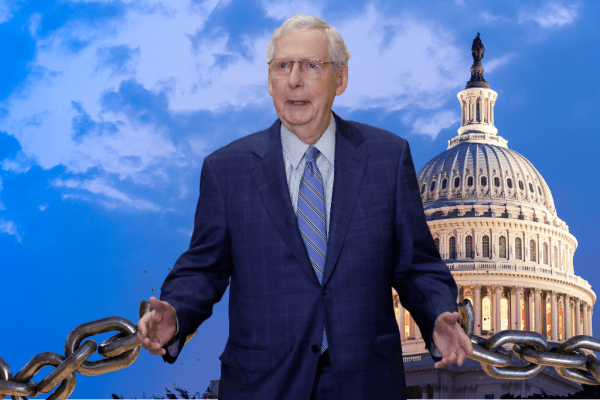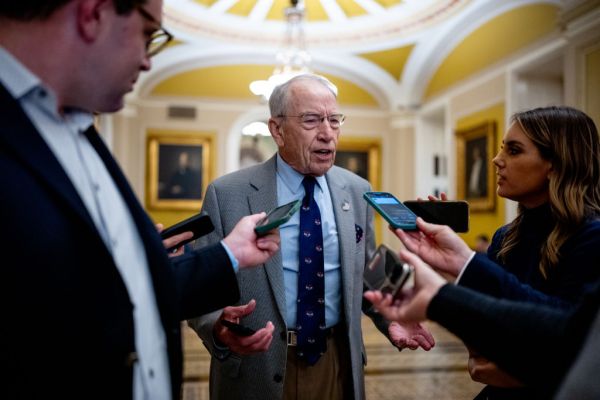Whether it’s requiring a license to arrange flowers or limits on pharmacists administering vaccines, excessive barriers to work and care are a nationwide problem without an obvious nationwide solution. Occupational licensing—which affects industries from cosmetology to the building trades to law and medicine—is largely the purview of state and local governments.
However, as the largest employer in the United States, there are steps the federal government can take to help boost economic freedom while respecting federalism.
Including the armed forces, the executive branch employs more than 4 million people. Recent estimates peg the total federal workforce as high as 9.1 million when considering federal contractors and grant employees. In comparison, Walmart is reportedly the largest private employer in the country with around 1.5 million workers. Given that the total United States civilian workforce hovers around 160 million, the federal government’s employment reach accounts for at least 5 percent of the nation’s workforce. Government workers are also more likely to be required to have a license than are those who work in the private sector.
One proposal, from Tennessee Republican Rep. Diana Harshbarger, could help remove red tape and decrease unnecessary licensing requirements. The Freedom to Work Act, introduced on Wednesday, would require that every two years, the head of each federal executive agency review any regulation or federal law pertaining to their agency that imposes licensing requirements for employees or contractors, or even causes a state or local government to adopt a licensing requirement. The agency head must then identify what changes could remove or reduce each burden to its “least restrictive alternative,” while maintaining consumer protection and safety.
The report would then be submitted to the director of the Office of Management and Budget (OMB), the assistant to the president for Domestic Policy, and the director of intergovernmental affairs. In turn, the OMB director submits the report to the president and Congress, as well as publishes it in the federal register. Each agency must then implement any changes that do not require a change in federal law.
Some of these processes have already occurred in certain cases. In 2016, the Department of Veterans Affairs changed its regulations to expand the “scope of practice” for advanced practice nurse practitioners at certain hospitals. This allowed nurse practitioners, whose education requires at least a master’s degree, to engage in more primary care activities such as prescribing drugs without having to be under direct doctor supervision. Scope of practice reforms like these are proven to lower costs and increase access to care while allowing nurses to do what they are trained to do. Furthermore, the Indian Health Service “expanded dental care in rural Alaska by allowing dental aides, hygienists, and therapists to independently provide certain basic services.”
“Many occupational licensing requirements, under the guise of consumer safety, are simply a big government power grab to prevent competition and keep would-be workers out of a particular market,” said Rep. Harshbarger. “I’m committed to eliminating red tape that is keeping Americans out of work, and the Freedom to Work Act does just that.”
Congress’ foray into formalizing processes that combat excessive licensing burdens is a welcome development. Occupational licensing reform has increasingly become a cause on both the political left and right: The Trump administration made it a policy priority throughout former President Donald Trump’s term; President Joe Biden has spoken extensively about his support for occupational licensing reform; and Republican and Democratic members of both the House and Senate acknowledge the need for reform. The Obama White House was also a proponent. While there is less of a role for the federal government than states and localities on this issue, that doesn’t mean there aren’t creative and nuanced options that can make a difference. Congress would be smart to seize on a rare bipartisan opportunity to enact meaningful policy change that both helps Americans and the economy.
Shoshana Weissmann is a resident fellow at the R Street Institute, a free-market think tank based in Washington, D.C. C. Jarrett Dieterle is a resident senior fellow at R Street.







Please note that we at The Dispatch hold ourselves, our work, and our commenters to a higher standard than other places on the internet. We welcome comments that foster genuine debate or discussion—including comments critical of us or our work—but responses that include ad hominem attacks on fellow Dispatch members or are intended to stoke fear and anger may be moderated.
You are currently using a limited time guest pass and do not have access to commenting. Consider subscribing to join the conversation.
With your membership, you only have the ability to comment on The Morning Dispatch articles. Consider upgrading to join the conversation everywhere.